
This logo isn't an ad or affiliate link. It's an organization that shares in our mission, and empowered the authors to share their insights in Byte form.
Rumie vets Bytes for compliance with our
Standards.
The organization is responsible for the completeness and reliability of the content.
Learn more
about how Rumie works with partners.
Do you dream of goals that seem beyond your reach?
 Photo by Stefan Pflaum on Unsplash
Photo by Stefan Pflaum on UnsplashYou can live the life of your dreams by achieving any goal. All you really need to get there is a clear, succinct plan!
There are several ways you can plan your goals, but a flow chart is one of the best planning options. A flowchart can:
Improve efficiency in your planning
Help track your progress
Streamline your focus

What Is A Flow Chart?
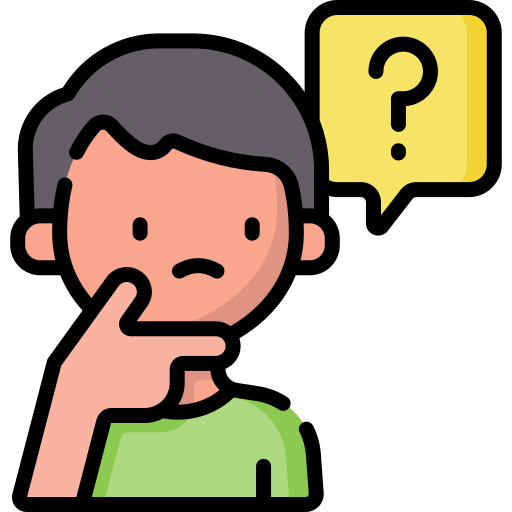
It's a clear illustration of any process, no matter how basic or complicated.
Depending on what you want to accomplish with a flow chart, it could be anything from a simple hand-drawn diagram to an intricate computer-drawn schematic.
When planning your goal using a flow chart, you'll use three basic symbols:
Terminator
 This is where you write down your goal.
This is where you write down your goal.
Process
 You use it to record independent steps to achieve your goal.
You use it to record independent steps to achieve your goal.
Connector
 It shows the direction of your actions.
It shows the direction of your actions.
How Useful Is A Flow Chart?
Here's an example of a hypothetical goal:
"Gain a solid reputation at my place of employment within two months."
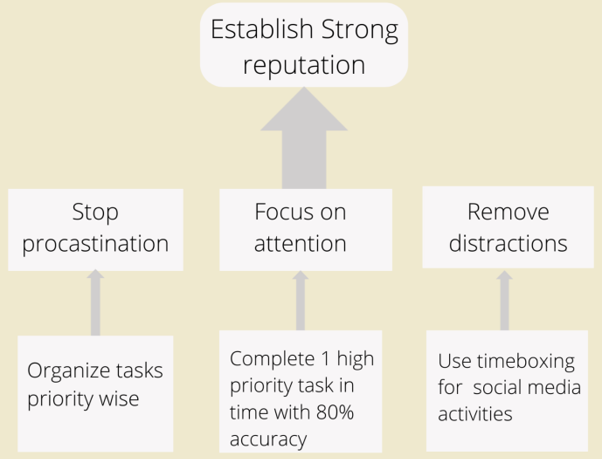 Image By Satarupa Das Majumder
Image By Satarupa Das Majumder
As illustrated above, your goal-planning could benefit from a flow chart in the following ways:
It's easy to locate specific steps in the process.
The directional flow specifies where to start and terminate.
The linear flow makes it simpler to track progress.
How To Draw A Flow Chart
A flow chart is a fantastic tool for breaking down any goal, small or big, into 3 manageable steps
Step 1
Write down your goal at the top of the flow chart, like this:
 Image by Satarupa Das Majumder
Image by Satarupa Das Majumder
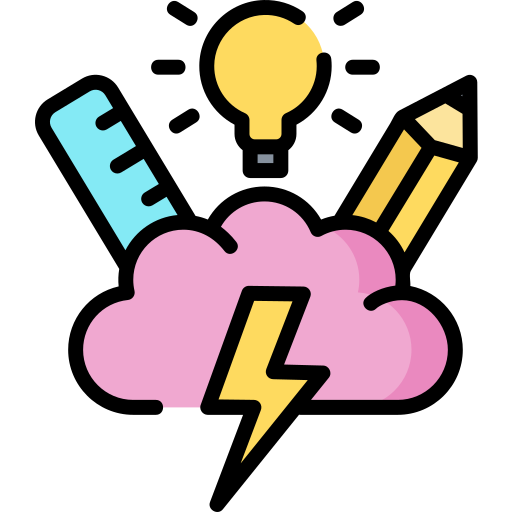
Next:
Brainstorm and find the three most crucial (primary) actions to achieve your goal
Create new branches in the flowchart.
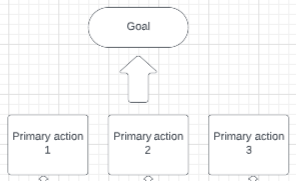 Image by Satarupa Das Majumder
Image by Satarupa Das Majumder
Repeat step 1 for each additional branch until you are satisfied that these steps will fulfill your goal.
 Image by Satarupa Das Majumder
Image by Satarupa Das Majumder
The Next Steps
Step 2
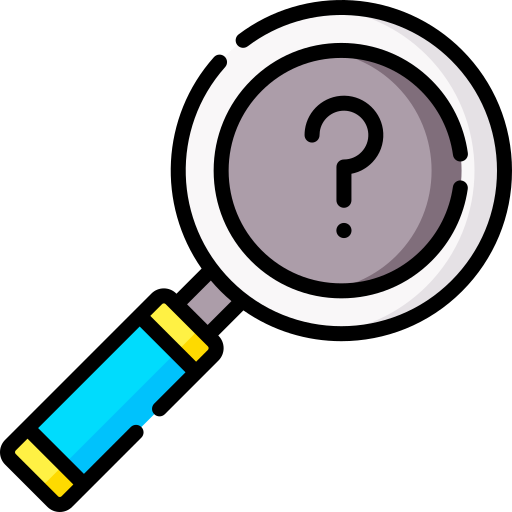
Examine each step of the flowchart and decide why you aren't performing it. Once you know the process and your pain points, it becomes easier to take action.
Step 3
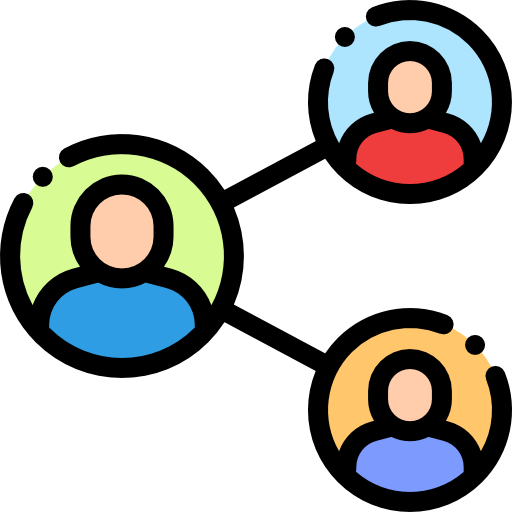
Share your plan with a responsible party (person/team) and give it a due date to track progress.
Did you know?
Tools To Create A Flow Chart

A flow chart can be made using many different tools. For example, you can start by using Excel or try an online app such as Lucidchart.
However, using pen and paper is an easy way to plan your goals using a flow chart because:
It's affordable.
You can work on it whenever and wherever.
Ideas flow more quickly on paper.
Did you know?
Meet Raj

Raj is a junior manager at his company. He wants to position himself as a successful leader within three years through the company's newly launched in-house mentoring program.
Raj created the following flow chart to plan his long-term goal using pen and paper.
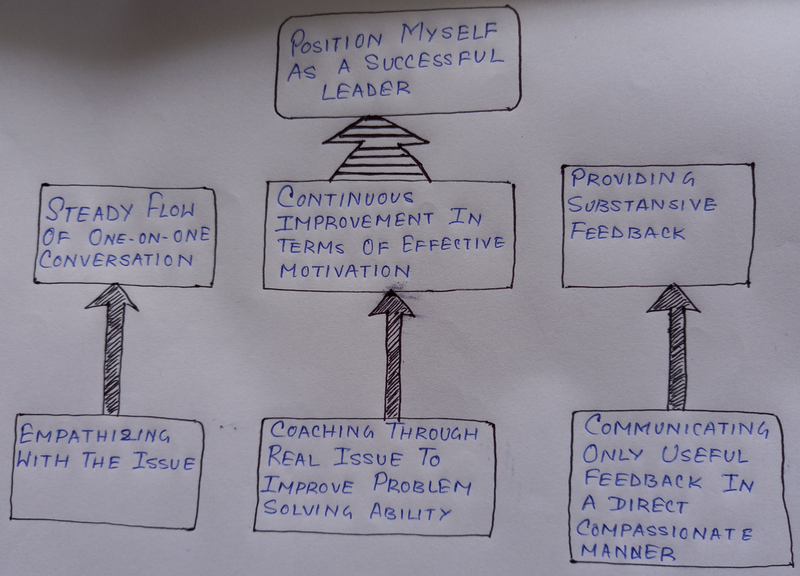 Image by Satarupa Das Majumder
Image by Satarupa Das Majumder
Quiz
Should Raj have someone else verify his flowchart?
Raj's flow chart is supposed to impact others, so having a mentor look over his flow chart will help him decide if it's the right plan of action.
Things To Remember

You can plan any goal, long-term or short-term, using a flowchart.
Goals need to be specific, for example:
🚫 Not Specific
I'll be rich by the time I retire.
✅ Specific
I'll have X amount by the age of Y through a, b, and c actions.
Did you know?
Take Action
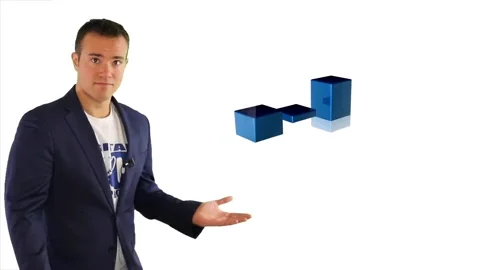
If you want to take charge of your life, make a plan for your goals right away!
This Byte has been authored by
Satarupa Das Majumder
Instructional Designer |Sr. SME| Educator